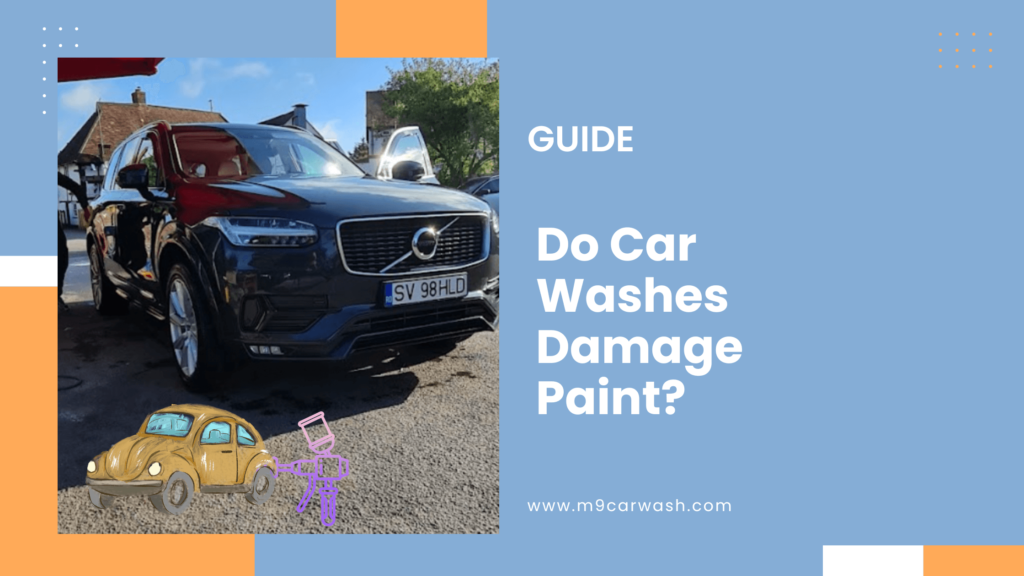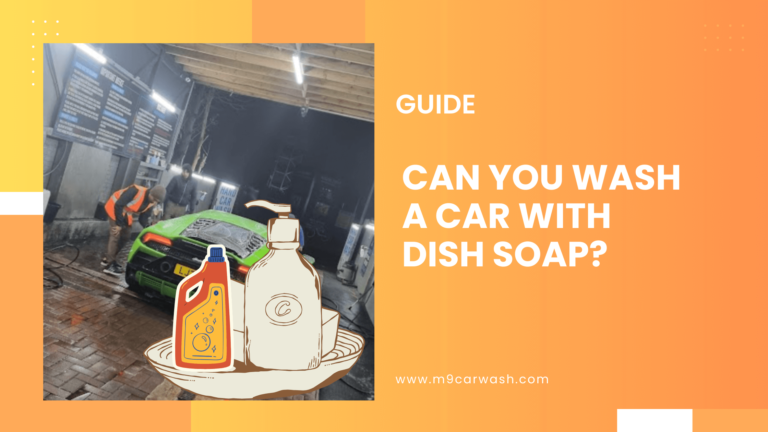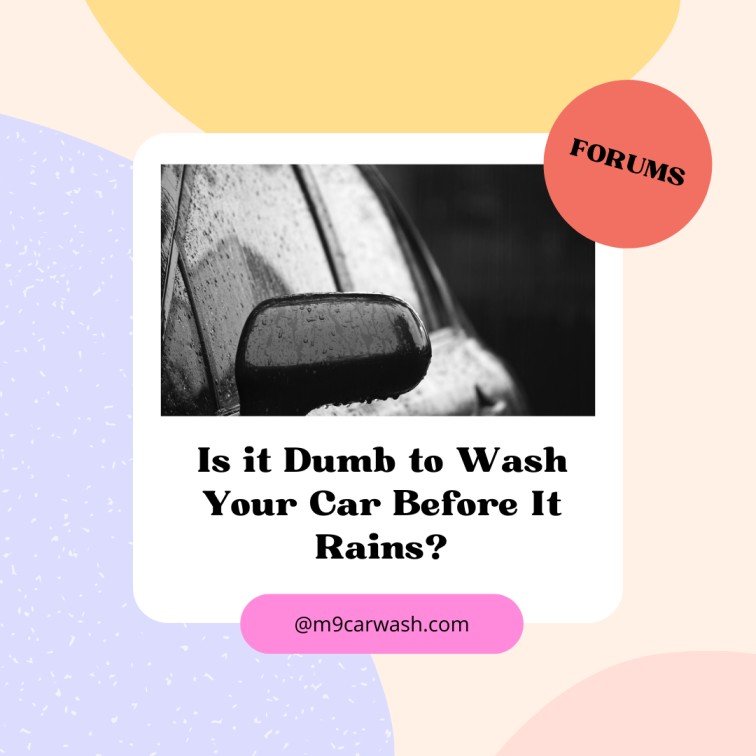Yes, car washes can damage paint, especially traditional brush washes that may cause scratches and swirls due to trapped dirt. Touchless car washes are generally safer but can use harsh chemicals that may degrade wax and sealants over time. Hand washing is often the best option for paint protection.
Car washes can potentially damage your vehicle’s paint, depending on the type of wash used.
- Touchless Car Washes:
- Generally safer than traditional washes, but they use harsher chemicals to compensate for the lack of physical contact, which can degrade wax and ceramic coatings over time.
- They may not clean as effectively as hand washing and can lead to water spots due to the chemicals used.
- Brush Car Washes:
- Often referred to as “scratch-o-matics,” these can cause significant damage due to dirt and debris trapped in the brushes, leading to micro-scratches and swirls on the paint.
- The materials used in these washes can be abrasive, especially if they are not cleaned frequently.
- Chemical Damage:
- Strong cleaning agents in automatic washes can strip wax and sealants faster than gentle hand washing, potentially harming paint and plastic trim.
- Regular use of harsh soaps can etch or discolor surfaces over time, especially if the wash equipment is not maintained properly.

Differences Between Automatic and Hand Washing
Automatic car washes use machines to clean vehicles quickly. They often involve brushes or cloth scrubbers that may be abrasive. While they save time, some worry about potential scratches or swirls on the paint.
On the other hand, hand washing gives me control over the cleaning process. I can use softer materials like wash mitts and sponges, which are less likely to cause damage. When I wash by hand, I focus on spots that need extra attention. This method can be more gentle on the paint but requires more effort and time.
Brushes VS Cloth Scrubbers
When using automatic car washes, it’s important to consider the type of brushes involved. Abrasive brushes can create micro-scratches on the vehicle’s surface. Using worn or dirty brushes can increase the risk of damaging the paint.
Cloth scrubbers tend to be less damaging, but they can still trap dirt and grit. If not maintained properly, these clothes might do more harm than good.
I find that knowing what equipment is being used helps in choosing a safer option for my car.
Pros and Cons of Touchless Car Washes
Touchless car washes are designed to avoid any physical contact with the vehicle. Instead of brushes, they use high-pressure water jets and cleaning solutions.
Pros: They significantly reduce the risk of scratches since there are no brushes coming into contact with the paint. They can efficiently remove dirt and road grime.
Cons: Although less likely to damage the paint, touchless washes may not be as effective on tough stains. Some stubborn grime might require a direct hand wash for optimal results.
Overall, I appreciate the convenience of touchless car washes, especially for regular maintenance.
Protecting Your Car’s Paint
Keeping your car’s paint in great shape is essential for its appearance and value. There are a variety of methods and products to help protect the finish. Here are some effective strategies.
Role of Wax and Sealants in Paint Protection
Wax and sealants play a key role in shielding your car’s paint. They create a protective layer over the clear coat, which is the topmost layer of paint.
Waxes: These provide a natural barrier against grime and UV rays. Regular applications of wax can enhance the shine and add a layer of protection. It’s best to apply wax every few months for optimal benefits.
Sealants: Unlike wax, sealants are synthetic and can last longer. They bond with the paint and create a strong shield against harsh chemicals and abrasives.
Effective Cleaning Solutions and Techniques
Microfiber Towels: I always use microfiber towels. They trap dirt and grit, reducing the risk of scratches during cleaning.
Two-Bucket Method: This technique involves one bucket for soapy water and another for rinsing the towel. It helps avoid transferring dirt back to the car, minimizing paint damage.
Maintaining Paint Finish Between Washes
Keeping the paint looking good between washes is all about regular maintenance. I follow a few simple steps.
Quick Detailers: I use quick-detailing sprays after cleaning to keep the shine. These products can remove light dust and fingerprints without needing a full wash.
Covering the Car: On days I won’t drive, I cover my car with a breathable car cover. This prevents grime and protects it from environmental damage.
Regular Inspections: I regularly check for any scratches or paint degradation. Addressing these issues early can prevent further damage.
Mitigating Damage From Car Washes
Many vehicle owners worry about the potential harm that car washes can inflict on their cars’ paint.
How to Identifying and Treat Car Wash Damage
Damage from car washes often appears as swirl marks, scratches, or micro-scratches. I’ve noticed that these imperfections can come from abrasive materials like roller brushes or harsh chemicals. Checking your car’s surface under good lighting helps spot these issues early.
If you find damage, addressing it promptly is key. A quality polishing compound can help reduce the appearance of light scratches.
For deeper scratches, consider a professional repair to avoid further issues like rust or staining. Keeping the paint protected with regular waxing can also improve durability against future washes.
Best Practices for a Safe Wash
To minimize damage, I recommend several best practices when washing your car:
- Handwashing: Using a soft wash mitt and a nearby source of water is often gentler than automated systems.
- Microfiber Towels: Always dry the car with a clean, soft microfiber towel to avoid scratches.
- Touchless Car Washes: If I opt for an automatic wash, I choose touchless washes that use high-pressure water jets instead of brushes.
- Pressure Control: Be mindful of excessive water pressure, as it can rough up the paint surface over time.
Frequently Asked Questions
I have gathered some common questions about car washes and paint damage. These questions address frequent visits, types of car washes, insurance, and hand washing.
Let’s see what you might want to know.
Can frequent visits to a car wash lead to paint damage?
Frequent visits can potentially harm your car’s paint. This often happens due to harsh chemicals and abrasive materials used in some washes. Over time, even small scratches can accumulate, making the paint look dull.
How does the touchless car wash compare in terms of preserving car paint?
Touchless car washes are usually better for paint preservation. They use high-pressure water and soap without any physical brushes. This reduces the risk of scratches, making it a safer option for your vehicle’s finish.
What is the safest type of car wash for maintaining the quality of car paint?
Hand washing is considered the safest for preserving car paint. This allows for careful washing using gentle methods. I can choose the products and techniques, reducing the risk of damage significantly.
Will insurance typically cover damage caused by a car wash?
Insurance coverage for car wash damages varies by policy. Some plans may cover damage if it occurs due to a faulty wash. I should check with my insurance provider to understand my specific coverage details.
Are there any risks to the paint when using an automatic car wash?
Yes, there are risks when using an automatic car wash. Brushes can cause fine scratches or swirl marks on the paint. I need to choose an automatic wash that uses softer materials to minimize these risks.
Is hand washing a vehicle more beneficial for the paint’s longevity compared to machine washing?
Yes, hand washing is generally more beneficial for paint longevity. It allows for careful attention and better cleaning methods. By using the right techniques, I can help my car’s paint last longer.






